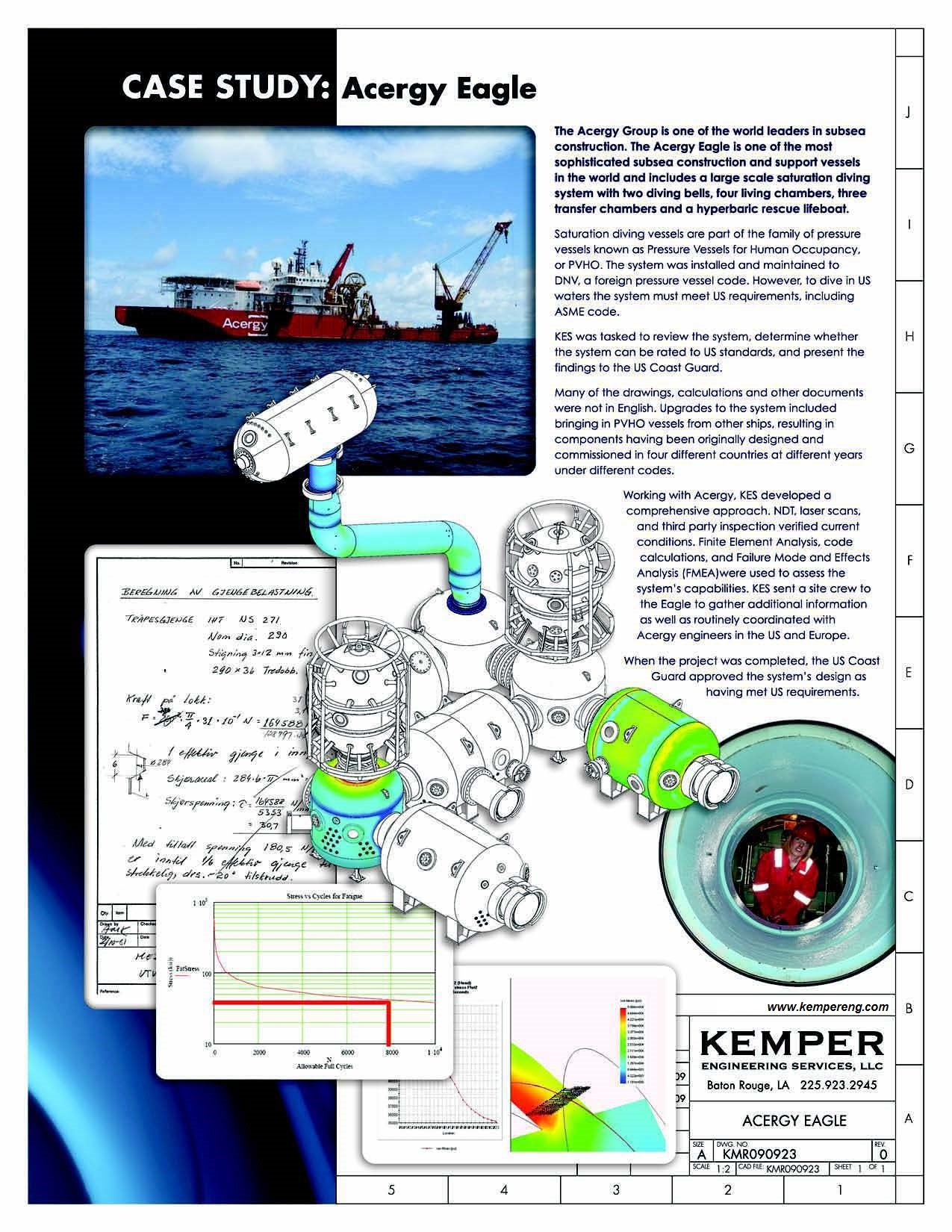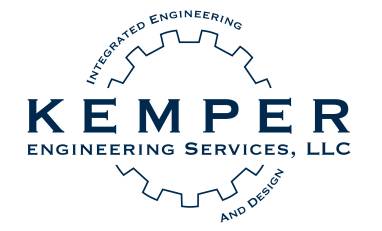Case Study: The ACERGY EAGLE
Bringing systems designed to foreign codes into US standards
The ACERGY EAGLE project was a combination of design engineering, reverse engineering, fitness-for-service, and code compliance. The EAGLE was upgraded with an expanded saturation diving system to include to Submersible Diving Chambers (SDCs) (“diving bells”), a hyperbaric life boat, and a purpose-built pressurized manway to allow the divers to ascend several decks to the lifeboat.
This is the same historic ship that has completed many important diving projects, most notably the dive and initial on the KURSK, the Soviet-era nuclear submarine that failed to surface and took so many sailors with it.
The project entailed:
- 18 nameplated pressure vessels
- 7 different Pressure Vessel codes and standards (none current), including ones with German and Norwegian design calculations and fabrication drawings
- Materials that were not in ASME Section II
- Materials that had not been manufactured in many years
- Items that had been severely modified, such as a Deck Decompression Chamber (DDC) that had been shortened by cutting out the middle third
- Items with corrosion and repairs
In order for the vessel to operate in US waters, the diving system had to comply with US Coast Guard and other US regulations, to include conforming to ASME pressure vessel code. KES and Acergy worked together to gather the required information and develop the detailed engineering to demonstrate the system was fit for the designated service. The ACERGY EAGLE was cleared by US Coast Guard review on the first pass with minor clarifications.
This was just one of many saturation systems designed by or reviewed by KES. In addition to diving, KES has worked in the latest innovations in saturation physiology: “dry diving” tunneling, where tunnel machines use pressure to drive back water during continuous tunnel boring. Our paper documenting and sharing our techniques can be downloaded from ASME.

